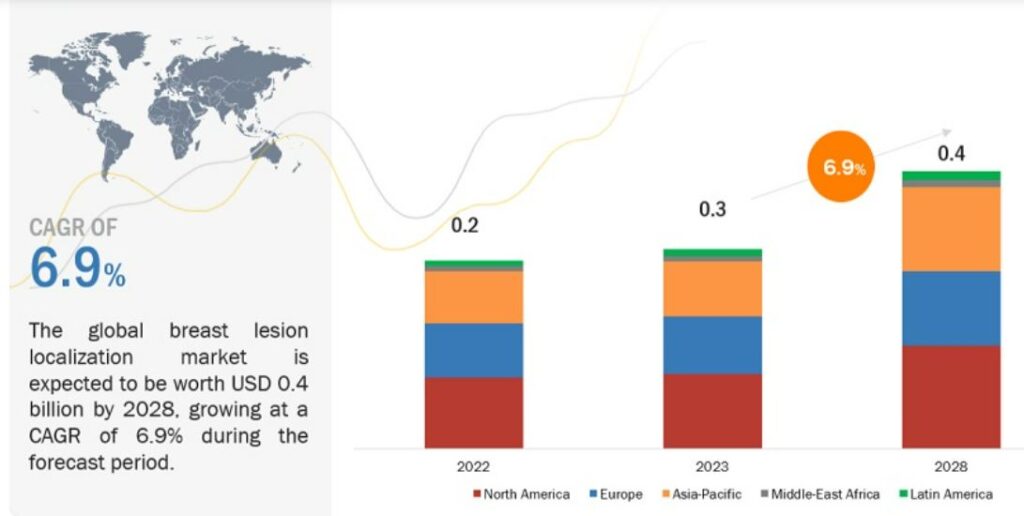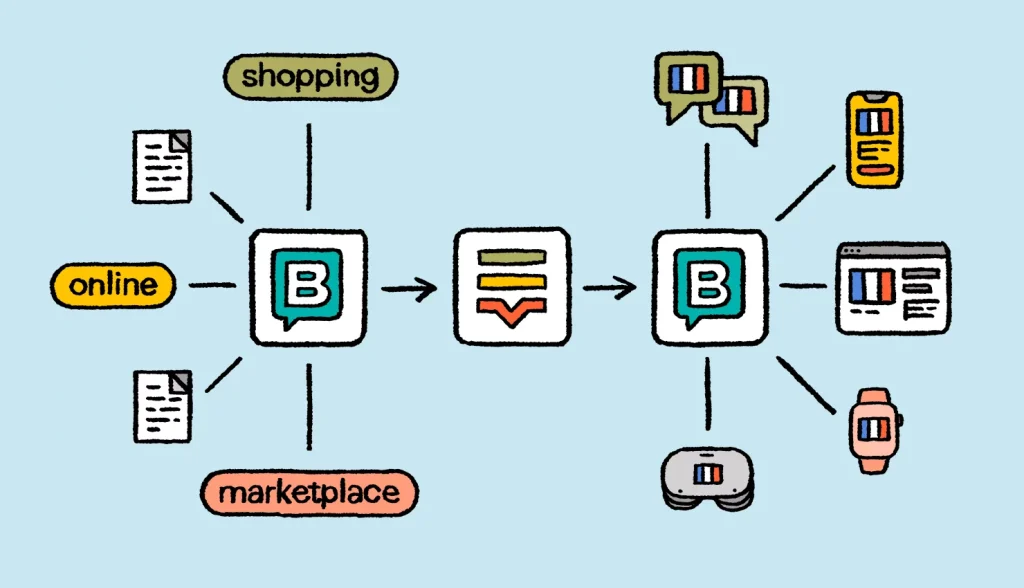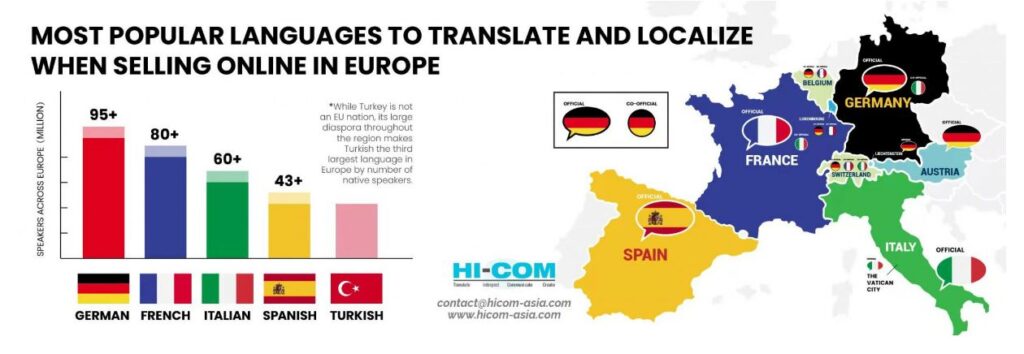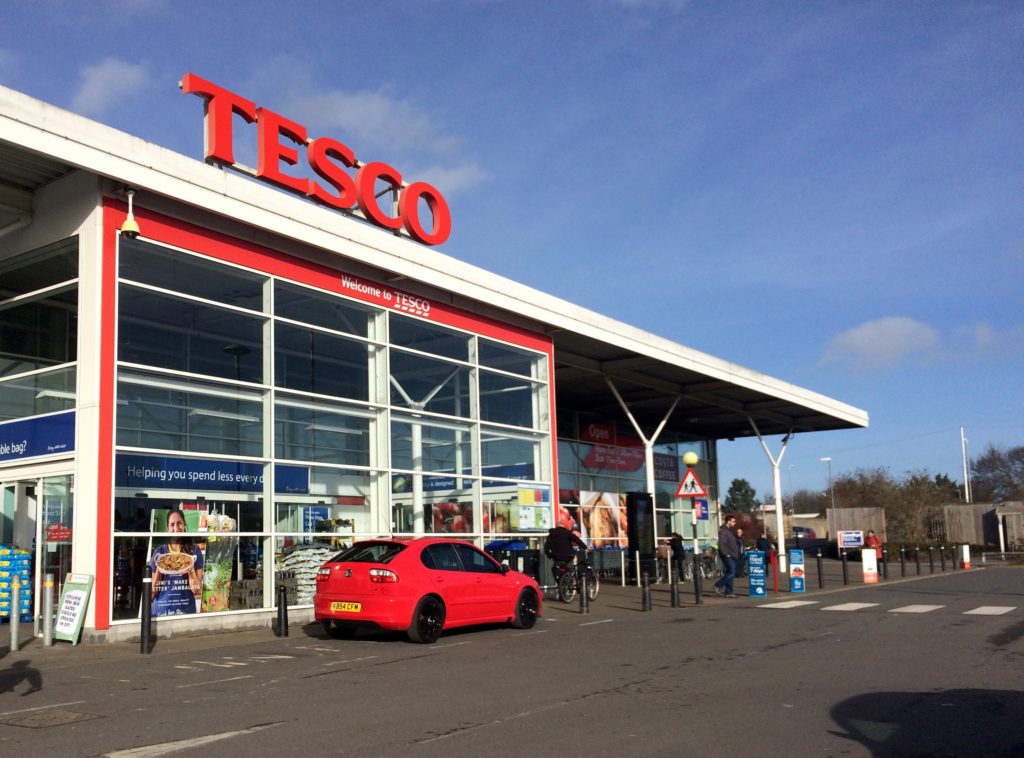Introduction
In today’s interconnected global marketplace, the ability to adapt and resonate with diverse audiences is more than just an advantage. It’s a must-have. Localized marketing plays a central role here. This is an important strategy for any company looking to expand its reach beyond its home territory. This introduction sets the tone for a series of insightful articles that explore the fundamentals of successful localized marketing.
Why is localized marketing important?

Localized marketing is more than just translating content. It’s about rethinking and adapting marketing strategies to meet the unique cultures, languages and consumer needs of different regions. It’s a strategic approach that helps businesses speak directly to their audiences in a relevant and engaging way, breaking down barriers and building stronger connections.
What you can expect from this article?
In future articles, we will discuss the most important aspects of localized marketing.
- Cultural Sensitivity: Learn how understanding local culture can influence marketing strategy using real-world examples like IKEA and Starbucks.
- Digital Localization: Discover the nuances of adapting your digital content to different markets and ensure your online presence resonates with local audiences.
- Best Practices and Challenges: Discover best practices for effective localization and learn how to overcome common pitfalls to ensure your strategy stays on track.
- Practical Tips: Get actionable insights with top tips for developing localized marketing strategies that truly speak to your customers.
This article is for anyone looking to improve their marketing efforts with localized strategies. Whether you’re an executive, marketer, or entrepreneur, these articles provide valuable insights and practical tools to help you successfully engage diverse markets and turn global opportunities into success.
What is Localization in Marketing?
Localization in marketing refers to the specific adaptation of a brand’s advertising and marketing strategies to different local markets. This approach adapts content to local culture, language, values, and consumer behavior, ensuring that marketing messages are relevant and resonant.
The global lesion localization market in terms of revenue was estimated to be worth $0.3 billion in 2023 and is poised to reach $ 0.4 billion by 2028, growing at a CAGR of 6.9% from 2023 to 2028. (www.marketsandmarkets.com)

Source: https://www.marketsandmarkets.com/
A localized marketing strategy is an essential element for brands that want to build strong connections with their customer base in different regions. The core of localized marketing is adapting a brand’s messaging and approach to the specific cultural, linguistic, and consumer behavior nuances of a local market. This strategy goes beyond just translating content. It’s about redesigning it to resonate with local audiences.
The importance of localizing advertising and marketing
*Cultural Relevance: Tailoring content to local cultures avoids misunderstandings and demonstrates respect for local customs and values, which is vital for brand acceptance.
*Increased Engagement: Localized marketing resonates more with audiences, leading to better engagement. For instance, in Germany, marketing that emphasizes efficiency and reliability tends to receive a positive response, while in the UK, a more casual and witty approach may be more effective.
*Competitive Advantage: By localizing marketing efforts, brands can differentiate themselves from competitors who may not be as attuned to local nuances.
Localized and underground marketing

Source: https://lokalise.com/
The contrast between localized marketing and underground marketing is quite stark as they both represent different approaches to targeting an audience.
Both localized and underground marketing strategies aim to target audiences in a more personalized way, but their techniques and target users are very different. Localized marketing aims to adapt to and respect the broader cultural and consumer context of a region to provide a more holistic approach. In contrast, underground marketing often leverages exclusivity and insider appeal to target specific subcultures or niches. For businesses, understanding the nuances and potential benefits of each approach is key to determining the most effective strategy for their brand and target market.
A Step-by-Step Marketing Localization Strategy
In today’s global marketplace, a one-size-fits-all marketing approach is no longer effective. Businesses looking to expand their reach must adapt their strategies to appeal to different audiences. This is where localized marketing strategies come into play. By adapting your approach to the cultural, linguistic and social characteristics of each target market, you can create more effective and relevant campaigns.

1. Understand the basics of marketing localization:
Before discussing localization in detail, it is important to understand its nature. Marketing localization is more than just translating content. This includes adapting marketing strategies to local culture, language, and consumer behavior. This process ensures that your brand’s message is not only understood, but also resonates with and appeals to local audiences.
2. Evaluate the market:
The first step to a successful marketing localization strategy is thorough market research. Understand the demographics, cultural norms, purchasing habits, and language nuances of your target region. This information helps you customize your marketing materials, from visual content to product descriptions.
3. Localization of marketing materials:
Once you have a clear idea of your target market, it’s time to start customizing your marketing materials. This includes website content, social media posts, promotional materials, and product descriptions. Ad localization isn’t just about linguistic accuracy. It’s about cultural relevance and sensitivity.
4. Cooperation with local experts:
An effective marketing localization strategy benefits from working with local experts. These experts provide insight into local markets and help ensure that localized content is culturally appropriate and engaging.
6. Consistent brand message:
Maintain a consistent brand voice and identity across all regions as you tailor your message to local markets. This consistency helps build a strong brand that is recognized globally.
Localization in marketing is more than just a strategy. A must-have in today’s globalized world. By implementing a thoughtful and consistent localization marketing strategy, companies can significantly increase their global appeal and establish closer connections with diverse audiences.
Market Research and Analysis
Localization in marketing, the process of adapting content to specific markets, is critical in today’s globalized economy. Effective market research and analysis is the cornerstone of successful marketing localization.
By understanding and addressing the unique needs of local audiences, companies can ensure that their marketing strategies are relevant and effective in different markets.
- Essence of market research in localization:
Market research is critical to understanding local market dynamics, preferences, and behaviors. We support the localization of digital marketing, allowing brands to meaningfully engage with different cultural groups.
- Identification of local target group:
Understanding your local audience requires analyzing demographics, purchasing habits, and cultural preferences. This knowledge is key to developing culturally sensitive and engaging marketing content localization strategies.
- Localization marketing strategy:
Localization marketing strategies tailor marketing efforts to the needs and preferences of specific regions. This includes language adaptation, cultural adaptation, and alignment with local market trends.
- Best practices and challenges:
Marketing localization best practices include conducting thorough market research, maintaining brand consistency, and involving local experts. Challenges such as language barriers and rapidly changing market dynamics require flexibility and constant adaptation.
Example of a Successful Content Localization Strategy
Another global brand with a successful localization strategy is Starbucks. Their famous green mermaid logo is familiar to most of us and has been reused in many countries. However, in some cases the company deemed it appropriate to make changes to suit the local culture. In Saudi Arabia, for example, the topless mermaid was deemed inappropriate and the logo was replaced with a white crown floating in the ocean.

Localizing Your Brand
Effective brand localization involves adapting a brand to specific regional characteristics. Here are some examples based on DACH and UK regions. For brands targeting the DACH region (Germany, Austria, Switzerland) and the UK, it is important to understand local preferences in food, language, culture, and values.

- Cultural considerations at DACH:
In the DACH region, precision and quality are highly valued. For instance, a tech brand could emphasize precision engineering in Germany, while in Switzerland, a focus on quality and reliability resonates well. Incorporating elements of local cuisine, like referencing the popularity of bread and pastries in Germany or chocolate in Switzerland, can also create a more relatable brand image.
- Language nuances in Europe:
In such a multilingual region, it is important to adapt your content linguistically. For example, adapt your marketing materials to Swiss German in Switzerland and Standard German in Germany. Using regionally specific terms and phrases greatly improves relativity.

Source: https://www.hicom-asia.com/mapping-the-european-e-commerce-market-and-how-it-can-be-developed/
- Localization for the UK market:
In Britain, humor and wit are an integral part of the culture. Brands can take advantage of this by adding some British humor to their marketing strategies. Additionally, recognizing local values such as sustainability and diversity is particularly effective in the UK market.
“The UK is a great place to do business, with a highly skilled workforce, low levels of corruption, and a supportive legal system that makes it easier to protect intellectual property.” – Bill Gates, co-founder of Microsoft.
Conducting a competitive analysis is essential to understanding the UK competitive environment and implementing a successful market entry strategy. Below are some tips for conducting a competitive analysis.

Source: https://kadence.com/
Content Localization
In the digital marketing space, localizing content is important to effectively reach and engage local audiences. It’s about adapting content to the specific cultural and linguistic needs of different regions.
Localized content is extremely important to resonate with specific audiences. It’s not just about translating words, it’s also about adjusting messages to reflect local culture, values and behaviors.
Some statistics support these facts:
- according to CSA Research, almost 40% of internet users stated they will never buy from websites that are not in their native language.
- 65% of non-native English speakers prefer content in their native tongue, even though they are highly proficient in English (CSA Research).
Strategies for effective content localization:
- Understand local preferences: Research to understand cultural nuances and consumer preferences.
- Cultural and Linguistic Adaptation: Adapt your content to local customs and language using colloquialisms and culturally relevant references.
- Leverage local talent: Leverage local creators and consultants to produce authentic and culturally sensitive content.
- Visual localization: Customize visual elements such as images and colors to match local preferences and cultural meanings.
Recommended approach:
- Brand Voice Consistency: Stay core to your brand and customize your message.
- SEO Tuning: Optimize your content for local search trends and keywords.
- Multi-channel approach: Localize your content across all platforms and formats used by local audiences.
- Compliance: Ensure your content complies with local advertising and marketing laws.
Localized content is the cornerstone of a successful localized marketing strategy. By carefully tailoring content to each specific market, businesses can build stronger connections with different audiences, resulting in increased engagement and brand loyalty.
Local SEO and Online Presence

Local SEO is an essential part of digital marketing localization. The focus is on optimizing your online presence and attracting more business through local search. This is essential for targeting
Implementation of local SEO:
Localized Keywords: Incorporate region-specific keywords that are relevant to your local customer base.
Google My Business: Use Google My Business for local listings and accurate representation of your business.
Localized content: Develop content that reflects local interests, culture, and language.
Mobile Optimization: Maintain a mobile-friendly website that supports growing mobile search trends.
Tools useful for local SEO:
Semrush or Ahrefs: For keyword research and SEO analysis.
Moz Local: Manage your local listings and ensure consistency across platforms.
Yoast SEO: WordPress plugin for optimizing SEO elements on your pages.
Google Analytics: Track website traffic and user behavior.
Local SEO is an essential part of an effective localization marketing strategy. By using specific tools and focusing on unique aspects of your local audience, you can increase your brand’s visibility and appeal online and attract more customers in your target area.
Local Advertising and Promotion
Local advertising and promotion are an important part of a successful marketing localization strategy. By targeting advertising and promotions to specific geographic markets, businesses can build more meaningful relationships with local audiences. Below is a breakdown of the different methods and best practices:
Digital Marketing Localization:
- Adapt online strategies such as website content and social media campaigns to local markets. Adapt your online advertising to local language and culture.
Local advertising channel selection:
- Use of local television, radio and print media for targeted public relations.
- Participate in local events and sponsor sponsorships to integrate into the community.
- Adapt digital channels to local cultural contexts.
Large-scale approaches and partnerships:
Customize national campaigns with regional variations for broader, more targeted reach. Collaborate with local businesses and influencers to create more credibility and insight.
Social Media and Local Engagement
Effective social media marketing requires a localized approach that adapts to the unique cultural nuances and consumer behaviors of each target market. Here’s a detailed guide to tools and practices for successful local social media engagement that can be applied to different regions of the world.

Localized social media marketing tips:
Manage and create content:
Sprout Social or Hootsuite: These platforms are ideal for planning and managing localized content across multiple social networks, allowing for region-specific targeting.
Canva: Provides a wide range of templates and design elements to create visually appealing content that meets local tastes and cultural norms. *
Geo-targeting and analysis:
Facebook Business Suite/Ads Manager: Provides advanced geo-targeting options to deliver content and ads to specific local audiences.
Google Analytics: Essential for tracking the performance of social media-driven traffic and providing insights into local audience behavior and preferences.
Influencer collaboration platform:
BuzzSumo or Heepsy: Helps you identify and work with local influencers who have a strong connection with your audience.

Effective local engagement practices:
Community interaction:
Actively participate in local online communities and conversations related to your brand. Maintain a responsive, culturally aware presence and respond to comments and messages.
Localized user-generated content:
Encourage local audiences to share their experiences with your brand and promote your presence as a community-driven brand. Feature articles and customer testimonials that highlight local interactions with products and services.
Adapt to local trends:
Stay on top of local social media trends with social listening tools like Brandwatch and Mention. Adapt your content and campaigns to these trends to ensure relevance and engagement.
Regular performance analysis:
Use social media analytics to measure the effectiveness of localized content. Continually refine and adapt your strategy based on audience engagement and feedback.
By integrating these tools and practices, businesses can improve their social media presence and effectively engage local audiences in various global markets. This approach leads to more meaningful interactions and stronger connections with a diverse customer base.
Measuring Localized Marketing Success
Effectively measuring the success of local marketing efforts is key to understanding and improving connections with local customers. Setting relevant key performance indicators (KPIs) and maintaining them through regular evaluations will help align your strategy with your customers’ needs and preferences.
Customer-centric localized marketing key performance indicators:
- Local audience engagement metrics: Measure the level of interaction and engagement (likes, comments, shares, views, etc.) with your localized content. This will help you understand what resonates with local customers.
- Localized website traffic analysis: Track and analyze traffic to your website from specific local regions. Key metrics such as session duration, bounce rate, and page views provide insight into local customer behavior and interests.
- Conversion rates in local markets: Monitor how effectively your localized marketing is converting into desired customer actions such as sales, sign-ups, and other engagement metrics. This reflects the direct impact of marketing efforts on local customers.
- Brand awareness among local customers: Regularly assess how visible and recognizable your brand is in the local market. Surveys, social listening tools, and brand mention analysis provide valuable insights.
Maintaining and adjusting KPIs for the local market:
- Regular Reviews and Adjustments: Continually review KPIs to ensure they are aligned with evolving local marketing goals and adjust based on local market trends and customer feedback.
- Comparative Performance Analysis: Compare the performance of your marketing campaigns in different geographic markets and find out which strategies are most effective with different customer segments.
By focusing on these KPIs, companies can gain a deeper understanding of their effectiveness in the local market. This customer-centric approach allows you to fine-tune your local marketing strategies to ensure they meet the unique needs and preferences of each local audience, ultimately leading to increased engagement and customer retention.
Marketing Localization Challenges and Pitfalls
When localizing your marketing strategy for the European market, it’s important to use the right tools to effectively address specific challenges and pitfalls. These tools are designed to help companies deal with the European cultural, linguistic and regulatory landscape and ensure closer and more successful collaboration with local customers.

Cultural misunderstanding and insensitivity:
- Impact on customers: Cultural misunderstandings can lead to separation from European customers.
- Useful Tools: Consider platforms like “Cultural Navigator” for cultural insights and intelligence specific to European countries. Collaborate with local experts through networks like “People Per Hour” for region-specific advice.
Inconsistent brand experience across markets:
- Customer confusion: Lack of consistent messaging can confuse customers in different parts of Europe.
- Consistency Tools: Use a brand management platform like “Brandfolder” or “Widen Collective”. These are suitable for managing brand assets in various European markets.
Language and communication barriers:
- Customer misunderstanding: Inaccurate translations can lead to misunderstandings.
- Localization tools: Use translation services aimed at the European market, such as “Translated” and “Straker Translations”. To improve your content, consider tools like “DeepL”, which is known for its accuracy in European languages.
Legal and regulatory hurdles:
- Customer Trust Issue: It is important to ensure compliance with European law.
- Compliance tools: Platforms like **Osano** and **OneTrust** help you manage GDPR compliance and data protection regulations, which are important in the European market.
Integrating these tools into your marketing localization strategy for the European market will greatly improve your ability to engage with local audiences. You will provide valuable support in maintaining cultural relevance, ensuring brand consistency, ensuring clear communication, complying with legal requirements and effectively interacting with customers in different regions of Europe.
Case Studies and Examples of Localized Marketing
Examining localized marketing initiatives in regions such as the DACH (Germany, Austria, Switzerland) and the UK offers valuable insights for businesses seeking to navigate global markets. These case studies highlight the importance of strategic adaptation and cultural sensitivity.
Successful Localized Marketing Campaigns:
Localization does not just tell your audience what your product or services do; it goes beyond connecting directly with the audience in a way that makes them feel like your business is local. It helps you create new markets and adapt your brand in these markets.
Below are examples of companies that embraced localization and got success from it:
IKEA in Germany:

✔ Strategy Implementation: IKEA adeptly adjusted its product dimensions and store layouts to cater to the compact living spaces typical in German cities.
✔ IKEA Germany partnered with Google Maps Platform to innovate its website with features to help customers locate the most convenient stores for them and find the products and services they need faster.

Source: https://cloud.google.com/customers/ikea-germany
Positive Outcome: This strategic localization significantly improved market penetration and customer acceptance in Germany.
Key Learning: Tailoring product offerings to align with local lifestyles can lead to increased market relevance and customer satisfaction.
Starbucks in the UK:

Localized Marketing Challenges and Lessons:
Marketing any business has its challenges. From knowing which channels to focus on to implementing strategies and measuring results, there is a lot of moving pieces to focus on.
Below are examples of companies that embraced them:
Walmart’s Market Exit from Germany.

Strategic Misalignment: Walmart’s application of its American retail model in Germany, without significant localization, led to a cultural mismatch with German consumer preferences.
German’s were used to bagging their own groceries as it was not sanitary or normal for others to touch their items. Customers were not used to and did not like that Walmart employees would bag their groceries for them. Germans had their familiar discounted and walking distance stores they would go to.
Consequential Withdrawal: This resulted in Walmart’s eventual exit from the German market.
Crucial Insight: Understanding and respecting local consumer behavior and preferences is essential for successful market entry and sustainability.
Tesco’s Venture into the US Market:

The stores were small and offered a limited range of products, which did not appeal to American consumers who were used to larger stores with more extensive product offerings.
Market Retreat: The lack of effective market adaptation led to Tesco’s withdrawal from the US.
Strategic Recommendation: Comprehensive market research and understanding of local consumer behaviors are critical for successful international expansion.
Professional Takeaways:
Adaptation to Local Markets: Customizing products and services to local preferences, as demonstrated by IKEA and Starbucks, is vital for international market success.
Cultural Sensitivity: The experiences of Walmart and Tesco underline the importance of aligning business practices with local cultural norms and consumer expectations.
Localized Digital Engagement: Effective adaptation of digital marketing strategies to local contexts, languages, and cultural nuances is essential for engaging with diverse global audiences.
These case studies underscore that effective localized marketing requires a sophisticated blend of cultural understanding, market-specific strategic adaptation, and a commitment to continuously evolve with changing consumer dynamics.
Conclusion

Reflecting on today’s digital marketing localization debate, we navigated a rich landscape of strategies, challenges, and real-world examples to flesh out the definition and implementation of an effective localization marketing strategy.
Digital Marketing Localization: At the heart of digital marketing localization is the adaptation of online marketing content and strategies to the culture, language, and consumer preferences of a specific global market. Our research shows that it’s important to ensure your marketing messages resonate with a variety of audiences.
Definition of localization marketing strategy: Define this as a comprehensive strategy for adapting a brand’s marketing activities to a specific regional market, as evidenced by the successful adaptations of IKEA in Germany and Starbucks in the UK. defined as an approach. These brands have demonstrated how differentiating and customizing their products and marketing strategies can significantly increase engagement in local markets.
Localization of marketing content: The art of adapting content to local culture and language is extremely important. This process goes beyond simple translation and requires a deep understanding of local nuances, as evidenced by the successes and failures of global brands such as Walmart and Tesco in foreign markets.
Marketing localization best practices: This includes deep cultural understanding, strategic customization of marketing materials, leveraging local expertise, and adapting digital strategies to local preferences and behaviors. These practices are essential to building a genuine connection with your local audience.
Top tips for marketing localization:
- Conduct thorough market and cultural research.
- Collaborate with local experts for authentic content adaptation
- Regularly review and adapt strategies based on local feedback and evolving market trends.
- Ensure brand consistency while allowing flexibility for local nuances
- Use advanced tools for accurate translation and cultural adaptation.
In conclusion, a localized marketing strategy is not just a tactical decision, but a necessity in today’s globalized business environment. A delicate balance is required between global brand consistency and local market adaptability. By adopting these strategies and continually evolving with market trends, companies can achieve a truly global reach while maintaining local resonance, resulting in customer engagement across diverse markets. Stronger loyalty and sustainable growth.



